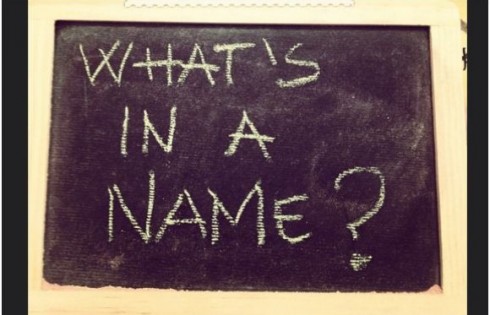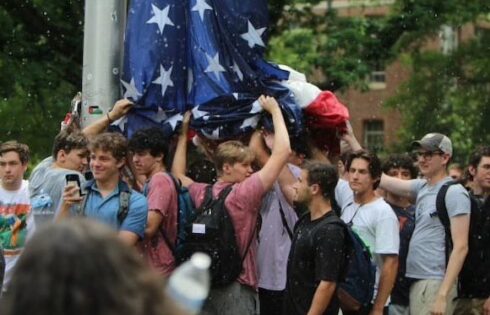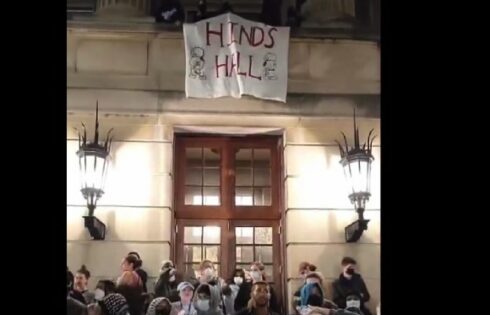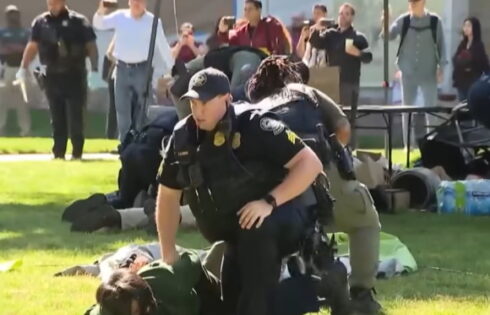
It was December 16, 2007, the 234th anniversary of the Boston Tea Party. I was at home, watching online, as a group of about fifty Ron Paul supporters braved the cold Ohio winter to meet in downtown Columbus and throw cardboard crates into the river. As a far left Democrat at the time, I couldn’t quite understand what throwing a box labeled “big government” into a river was accomplishing, but I slowly realized that our anger over certain issues, like the Federal Reserve or the Patriot Act, was shared.
I began wondering why a pseudo-socialist college student, like myself, and a rowdy bunch of conservative-libertarians were sharing so many beliefs. I delved further into the philosophy, and by the time the 2008 elections rolled around, I had become a firm believer in natural rights and the Constitution.
Everything about it made sense to me: what powers government should have; what powers they shouldn’t. There was a clear guide on how to obtain the highest goal, freedom, and none of the murky justifications of socialist policies. Each line of the Declaration of Independence and Constitution actually had meaning and wasn’t just outdated politics. I knew this was where I belonged.
After the presidential election ended, I wanted to do more. I wanted to become active.
In January 2009, I met a fellow Ohio State student at an Ohio Freedom Alliance meeting (The OFA had formed out of a local Ron Paul Meetup group). We had heard of a new group being formed called Young Americans for Liberty. We wanted to join a chapter, but none yet existed at OSU. We decided to take the initiative. Within a month, we were an officially recognized student group and recruiting on campus. We were looking to gain support when we ventured to the Statehouse on April 15, 2009 for a supposed “Tax Day Tea Party”. We had no idea what to expect, but were surprised to find that instead of fifty Ron Paul supporters, there were several thousand people holding signs about the Constitution and civil liberties. It took us a moment to take it in and comprehend just how big this new “Tea Party” movement was becoming.
By that summer, our small student group had grow to over one hundred members and many of us joined 10,000 people for the next tea party in Columbus, headlined by Judge Andrew Napolitano. By now, tea party groups were everywhere. They were a dozen in Columbus alone. It became apparent that the only way we could achieve the change we wanted was to work together. This event marked the birth of the Ohio Liberty Council (OLC); a coalition of over 50 “liberty” groups in the state, such as tea party groups, 9/12 groups, and several chapters of Young Americans for Liberty.
As 2009 became 2010, things started moving faster and faster. Our chapter of Young Americans for Liberty was now hosting events for thousands of people involving Ron Paul and Judge Napolitano. The OLC had formed a 501c3 and a political action committee and was making a move on health care legislation.
In less than a year, I had gone from watching from the political sidelines of the left to being the State Chair for Young Americans for Liberty and attending conferences and events almost weekly.
But with our new found success came problems. People tried moving us in the direction of a Republican Party support group. While it has been tough, we’ve managed to hold true to our slogan of principle over party. I am now the Midwest Regional Coordinator for Young Americans for Liberty, and I am trying to duplicate the success we’ve had in Ohio in other states. The deciding factor on what impact this tea party movement will achieve is how well we can make that transition from a group of angry protesters to structured political organization.
Dave Grabaskas is the Midwest coordinator for Young Americans for Liberty and a PhD student at the Ohio Sate University in nuclear engineering.
Like The College Fix on Facebook / Follow us on Twitter




Please join the conversation about our stories on Facebook, Twitter, Instagram, Reddit, MeWe, Rumble, Gab, Minds and Gettr.